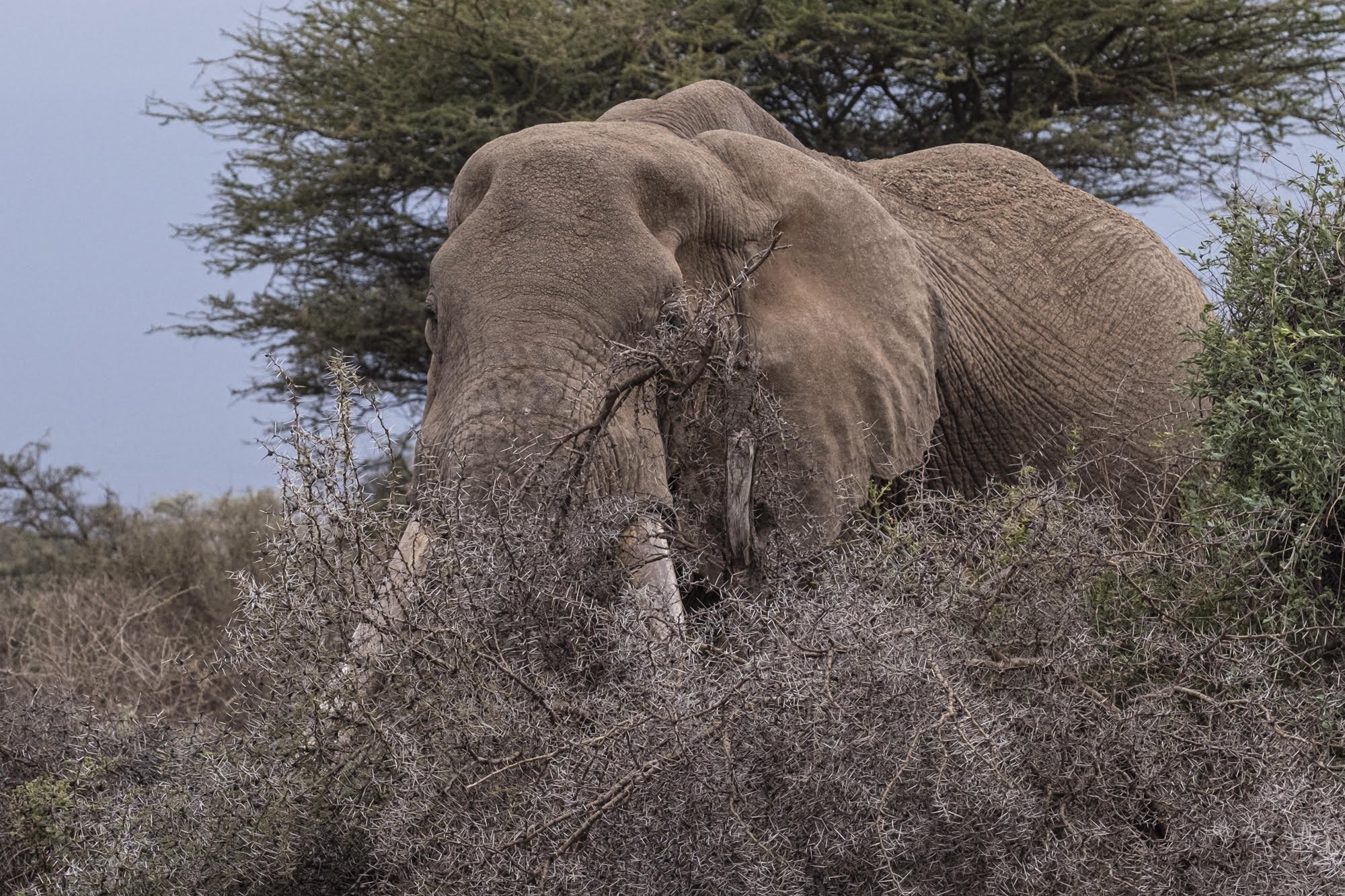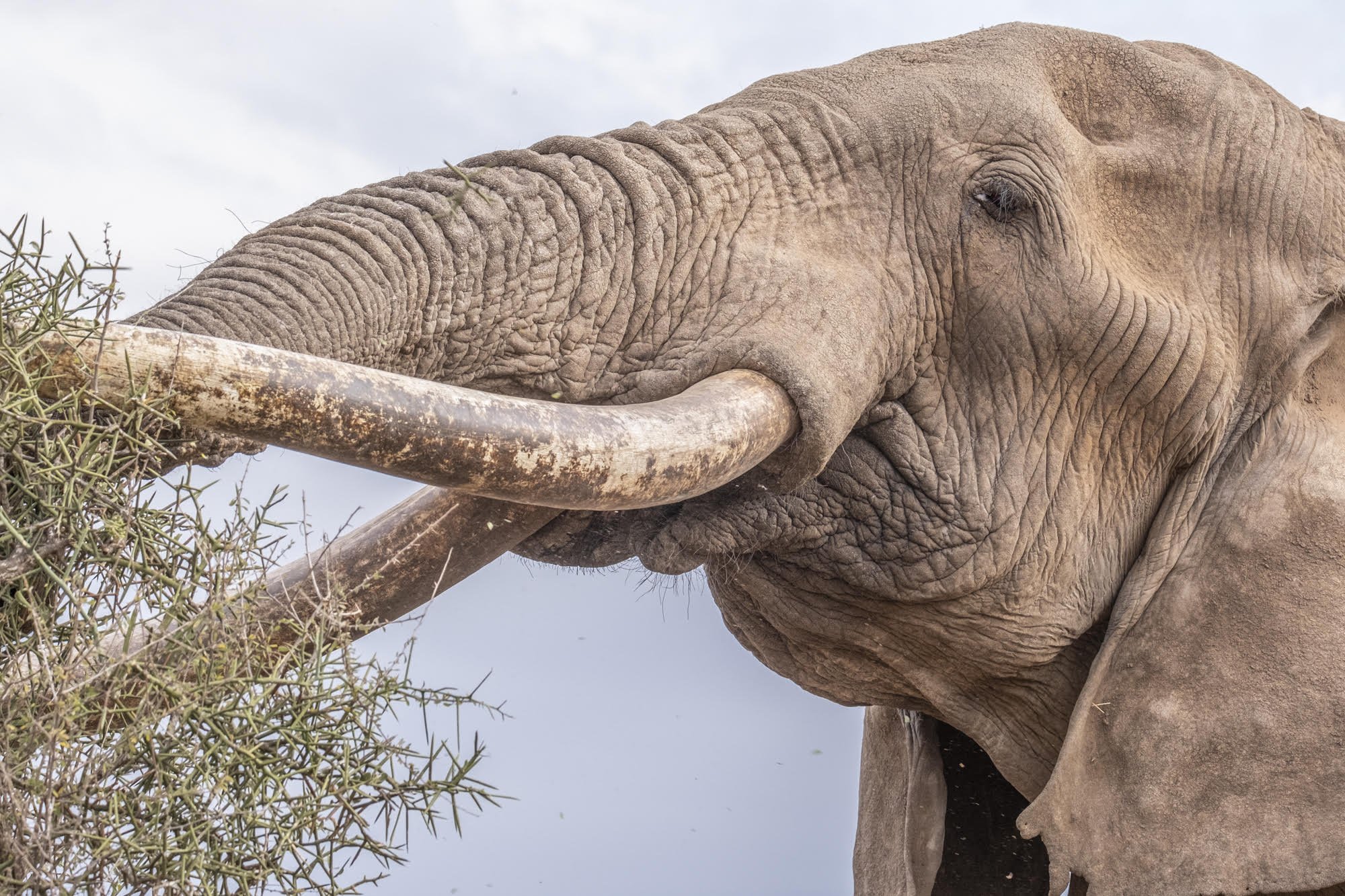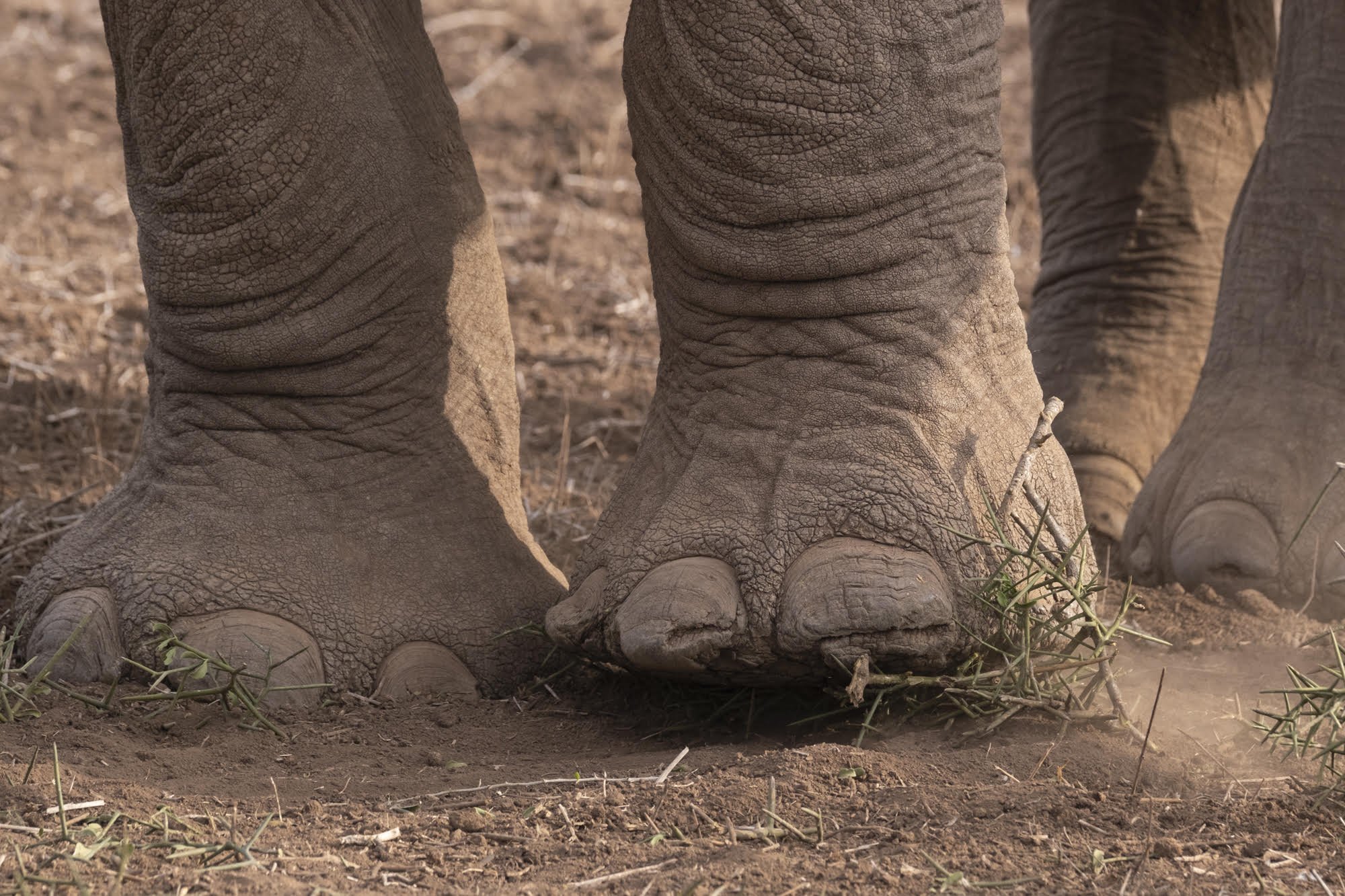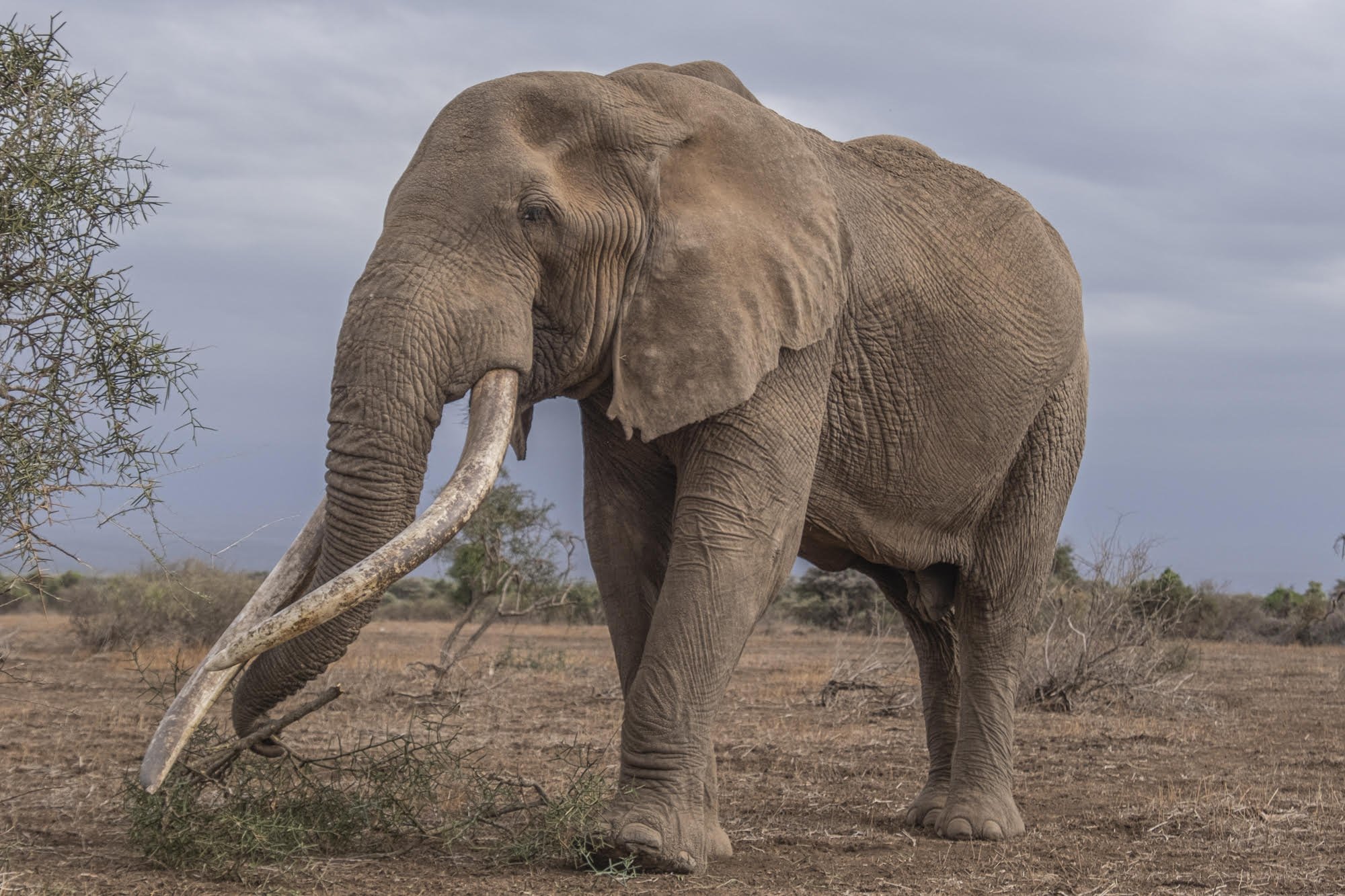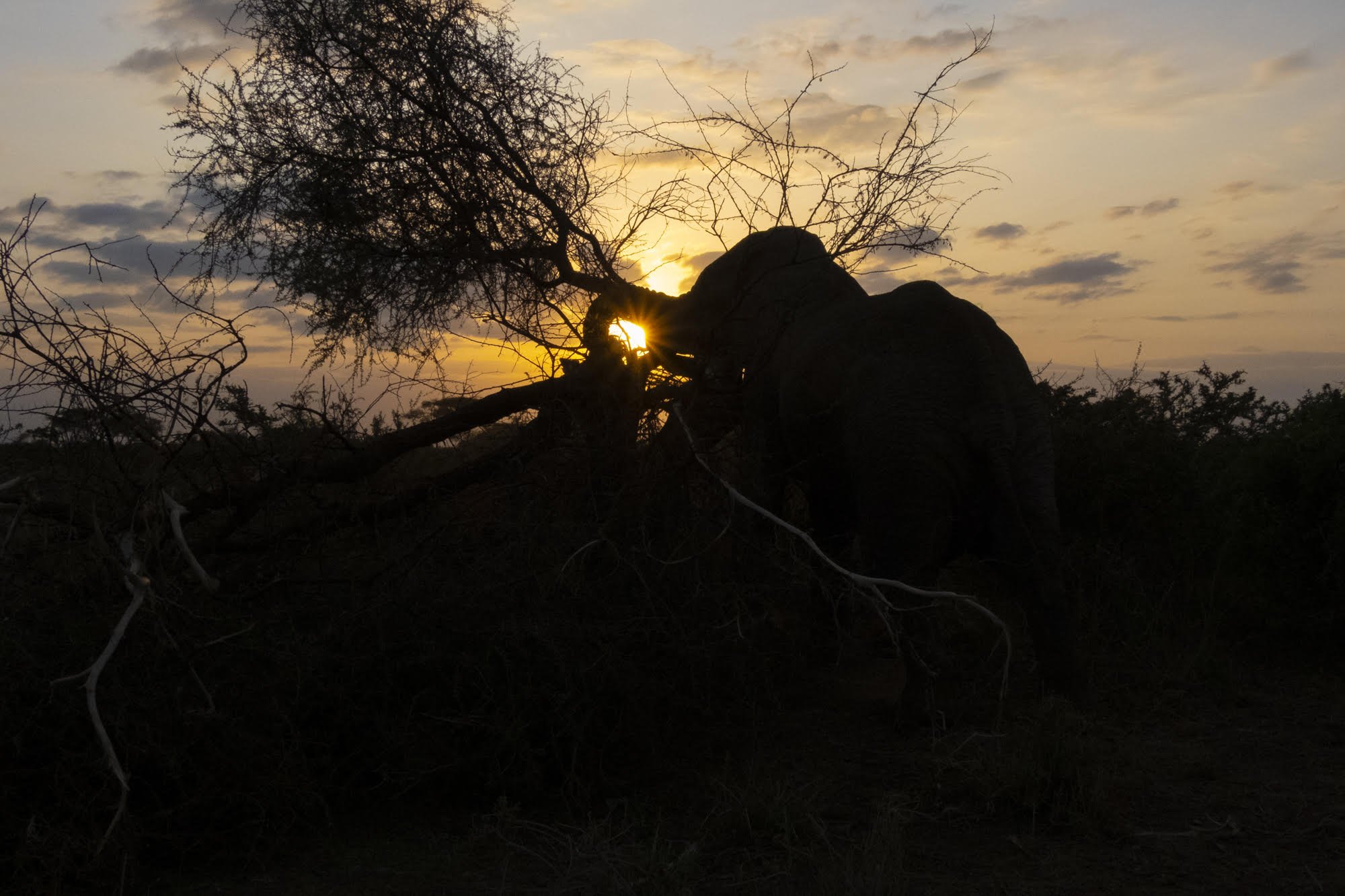When Thorns and Twigs are on the Menu – a Lesson in Elephant Ingenuity
Our natural world can be a resilient engine of regeneration.
We just need to give her some space, so that she can show us what she can do.
– Enric Sala, Conservationist & National Geographic Explorer
Watching Craig and his four young bodyguards browse on thorny acacia bushes was a fascinating lesson in elephant nutrition and etiquette. Elephants have tough digestive systems. Their diet consists of grass, leaves, twigs, tree bark and fruit. As the largest mammal on the planet, an average sized elephant needs at least 300 lbs. of food a day. When food is abundant an adult bull elephant the size of Big Tusker Craig can eat 600 lbs. of food a day! Due to the current drought in Amboseli the only grass in the region is near the swamps in the centre of the park. Outside that area elephants are forced to live on leaves, twigs and tree bark. Drought resistant thorny acacia trees and shrubs are a favourite choice on the menu.
Craig had an interesting strategy for dealing with the prickly acacia thorns. He neatly dropped each branch he broke off onto the ground and gently rolled it under his front foot to soften or break off the thorns.
Watching Craig carefully massage each branch was a lesson in elephant dexterity. The process also slowed his eating down considerably. Elders in elephant society pass on many survival lessons to the younger generation. Craig plays an essential role as a wise teacher for his young proteges. Trophy hunters often claim the “old ones” are no longer useful or needed. Nothing could be further from the truth. In fact, elephant cows prefer to mate with the older males in musth since a bull’s size and longevity are important genetic qualities to pass on. When older elephants are killed by poachers or hunters, a vast resource of knowledge essential for survival is lost to the next generation.
Elephants constantly demonstrate how considerate they are to other elephants. I noticed how Craig broke off a large acacia branch and sweetly set aside a piece for one of his young protectors.
Notice in this video clip how Craig places the branch beside himself as a younger bull approaches from behind. His disciple accepts the offering and stretches out his trunk to Craig in thanks. Elephants often extend their trunks and touch each other’s mouths as a form of greeting or acknowledgement. The pair ate side by side in companionable silence with Craig feeding his buddy a branch of acacia after each softening treatment. At one point Craig’s massive ear rested on the younger elephant’s face conveying a sense of affection and protection between teacher and student.
As the sun set Craig moved into a grove of trees where he deftly pushed over a tall acacia tree with one shove of his trunk. We left the five elephants munching contentedly in the growing darkness on the fresher leaves from the treetop. There is less time for rest and sleep when the food pickings are so slim.
See more images of Craig in my newly released book The Wisdom of Elephants. Early bird price still in effect $135 + $30 shipping.
Special discount: Shop early for the holidays! Buy 2 books $125 each plus $45 shipping. NOTE: Shipping will be calculated separately on larger orders.
Here’s what readers are saying:
I just opened your book and am blown away with how beautiful it has turned out!! I could not be more happy for you and want to wish you my warmest congratulations and deep gratitude for allowing me to have some small part of it. It's profoundly moving and I cannot wait to spend some time with it. – Ami Vitale National Geographic Photographer
Thank you for seeing the world with kind eyes, for capturing that viewpoint, and sending it out into the world and into my heart. – Maria C.
I want to savour your book slowly. The photographs are incredible. I feel like I can touch the elephants. – Ruth B.
Majestic, poignant, awe-inspiring. – Cindy V.

